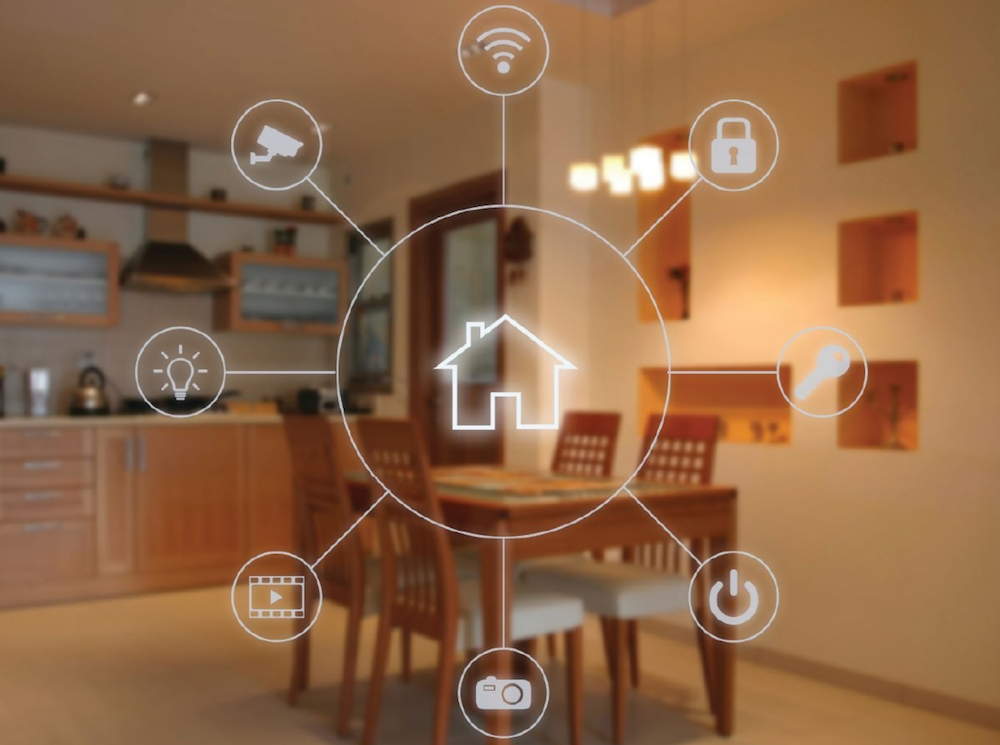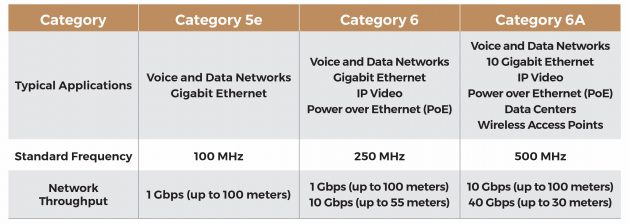
Features
How to create a reliable network
The role of a strong cabling foundation in home automation systems
April 6, 2021 By Daniel D. Dunar

Now more than ever, people are spending their time at home.
As the role of the home continues to evolve, so do new technologies, driving end-user interest in making at-home comfort more manageable and customizable.
At the foundation of these systems is a strong network cabling infrastructure. Dealer, installer and integrator businesses can take advantage of this growing interest with home network retrofits or new installations. In order to protect system performance, establishing a reliable cabling backbone must be a first priority.
Creating a strong network
Though internet networks can be forgiving, a consistent connection is critical for the transfer of information to smart home devices. Without a dependable connection, devices are unable to function reliably, threatening system performance. When implementing a strong home network, installers and end users can choose between wireless or wired system elements or create a hybrid approach with components of each.
Wireless
Even in wireless systems, cable is a necessity. Category cable must be used to create a cabling backbone that powers remote connectivity throughout the home.
In order to maintain a reliable connection, networking systems must use cable built for the speed and needs of its devices. High quality category cables verified to the necessary performance level ensure reliable network connectivity and support consistent wireless performance.
One of the biggest advantages of a wireless system is its convenience — for integrators, installers and end users. Installing cable in existing structures can be time-consuming and complicated. Wireless systems require minimal cables, making them easier to integrate in retrofit installations, in comparison to wired systems. End users also benefit from the ability to access their network connection throughout the home. This gives them the freedom to use their internet connection without relying on the location of a hardwired connection.
Despite their convenience, wireless networks, without precautions, can add security risks. Wireless networks can be hacked remotely from outside the home, threatening the security of personal data and smart home devices. End users can mitigate some risk by updating router firmware and changing the default password on their routers. Even with these precautions, wireless networks are not nearly as secure as wired connections.
Wireless networks also leave device performance to the mercy of a network’s speed. A network is only as fast as its weakest link, and depending on the number of applications in the system, bandwidth limits can cause inconsistent device performance.
Network reliability is influenced by the home’s environment and can be negatively impacted by interference from other devices and objects, structural elements and device distance from the router.
In order to optimize network reliability, routers must be placed in the location that provides the greatest wireless coverage, not the most convenient area.
Wired
In wired systems, the network connection is hardwired by running cable throughout the home. As a result, wired networks are easier to integrate in new construction, versus retrofit installations. Despite requiring more work up front, wired networks offer a more reliable point of connection and experience less interference than wireless systems. This supports faster data speeds over longer distances, without interruption from other devices or obstacles.
Wired systems are also more secure, protecting personal data and device security. To breach a wired network, attackers must physically connect to the network.
When installing a wired system, whether in retrofit or new construction, it’s important to take into consideration long-term use of these systems. Anticipate future needs and incorporate additional cabling throughout the home to prepare for new device integration. This can optimize the system’s longevity and ability to adapt to changing system needs.
Hybrid approach
Leveraging a hybrid approach with wired and wireless elements can ease the strain of a retrofit installation while adding wired system benefits. This can protect device performance while delivering a reliable connection throughout the home.
When designing a cabling system, consider the installation environment, the end user’s plan for future device integration and the specific needs of individual devices to determine a network approach that protects system longevity and agility.
Most importantly, make sure to build your network with cable designed to optimize system performance.
Choosing a quality cable
When designing a network system, cable type and quality must be a key consideration. To achieve continuous network connectivity, it’s important to choose reliable category cable to establish a strong backbone for your system. Currently, the minimum recommended grade for network cabling is Cat 5e. Cat 6 and Cat 6A both offer increased performance capabilities but may be an unnecessary upgrade. These cables operate best in systems with the following capabilities.

Though sometimes portrayed as a superior alternative to Cat 6A cable, Cat 7 cable is generally unsuitable for North American systems. Cat 7 cable connectors are incompatible with most devices and its performance is essentially identical to the more device-compatible Cat 6A cable. Cat 5e, Cat 6 and Cat 6A cables are recognized by TIA/EIA standards; Cat 7 cable is not.
In addition to being recognized by the TIA/EIA, reliable networking cable is also designed to meet specific industry standards. The following elements are critical in category cables and are an indication of product quality.
Pure copper conductors: Pure copper conductors are required in all communications cables; any alternative materials are not compliant with the National Electric Code (NEC) and can cause voltage drop and signal loss — leading to device failure. When paired with the demands of an integrated system, non-compliant cables are unable to function consistently, threatening the performance of the entire network.
Cable listings + verifications: Cables must receive listings and verifications from a nationally recognized testing laboratory. Cable listings test products to standards that mimic the environment and conditions in which they will be installed.
A listing signifies that cable meets all required fire and safety standards and has been manufactured using high-quality plastics with all necessary additives. A listing mark on the cable’s packaging and listing text and file number included on the cable’s print legend signify the cable has been listed by a reputable organization.
Cable verifications, alternatively, test a cable’s electrical performance standards. Each category level has its own requirements that cable must meet, and performance levels increase as the category number increases. Manufacturer claims of performance beyond the identified standards should be examined and considered with extreme caution. A verification mark on the cable’s packaging and verification text on the cable’s print legend demonstrates that the product is verified. As a note, listings and verifications for the same product can be received from different organizations.
Though not required by law, choosing products tested to listing and verification standards demonstrates that safety requirements have been met, while allowing installers and integrators to better identify the cable that will best support their system.
The role of a trusted manufacturer
No matter the network approach you take, the cable you choose to install will impact system performance and longevity. Avoid excess voltage drop, signal loss and device failure by carefully choosing cables for your application from a manufacturer you can trust. This will save you time and money, and ultimately, help you build your business reputation to win more bids.
A reliable home network provides the continuous connectivity that entertainment, comfort and home automation devices depend on for consistent performance. Set future smart home technology integrations up for success by choosing cable built for your network system. Simply put, a strong network cabling infrastructure creates a reliable connection that gives end users the flexibility to continue customizing their at-home comfort, one smart home device at a time.
Daniel D. Dunar is the marketing leader for Genesis Cable, a Resideo Technologies brand (www.genesiscable.com).
Print this page